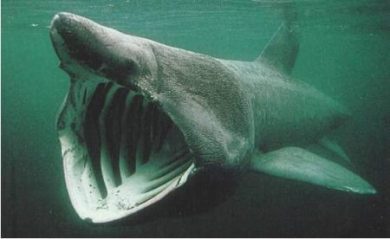A unique basking shark conservation project backed by the European Space Agency is due to begin off the coast of Co Donegal tomorrow.
The project involves the tagging of the huge sharks in Lough Swilly by some of the world’s most experienced scientists.
The new satellite tags, which contain the very latest Argos 3-4 chipset, will allow the sharks to be tracked from Donegal to their wintering grounds around Cape Verde off Africa.
Scientists hope to successfully fit five of the tags on baking sharks over the next ten days.
Those taking part in the unique project include members of the Donegal-based Irish Basking Shark Project.
Scientists say the new tags, developed with funding from the European Space Agency, will give researchers a greater understanding of the secret lives of the creatures.
Up until now satellite tags used to track the creatures have been hit and miss.
“This technology opens the door to brand-new possibilities. Currently, basking sharks are observed at the surface in some coastal areas mainly during spring and summer, but afterwards it is difficult to say where they go without tags and a large budget.
“These new tags make it possible to track them for long periods for a tenth of the price of current tags on the market. Despite numerous tagging campaigns, we still have all to learn about their breeding grounds for example, and where they go,” notes Dr. Hélène Gadenne, a marine biologist within APECS.
“With this new tag, we can track animals over their full migration (nearly a whole year) in near real-time.”
Typically, an underwater satellite tag records information and is then released from the animal.
Floating on the surface, the tag then starts transmitting its stored data.
It does this over and over until its battery power is depleted to ensure that the information is picked up by satellite at least once.
These new tags are able to perform what is known as a “handshake” with passing Argos 3-4 satellites. Once the first contact has been made, the information is transferred. On receiving an acknowledgment from a satellite that its data have been received, the tag stops retransmitting the same sensor data.
This efficiency draws less battery power and makes it possible to send up to ten times more data.
ESA worked with AnSem in Belgium under its ARTES programme to develop the ARTIC microchip that has been built into a marine tag manufactured by Star Oddi in Iceland. The miniature chipset means that tags can be smaller and lighter, yet record more data.
The new device works in conjunction with the Argos satellite data collection and environmental monitoring system operated by CLS in France, a leading provider of satellite services for environmental and maritime applications.
Two teams of marine biologists, from the French NGO APECS and the World Wildlife Fund, were involved in designing the tag and its attachment mechanism.
The tag in the recent demonstration recorded pressure – indicating the depth of the shark – temperature and light level for 3D mapping. The results so far have shown that the device is highly accurate and robust.
“The two-way link with the satellite is the key,” commented ESA’s Peter de Maagt. “The increased efficiency has had knock-on benefits that have opened up new opportunities for better, less invasive tracking.
“This makes it easier to monitor how wildlife is coping in our fast-changing environment.”
Tags:







